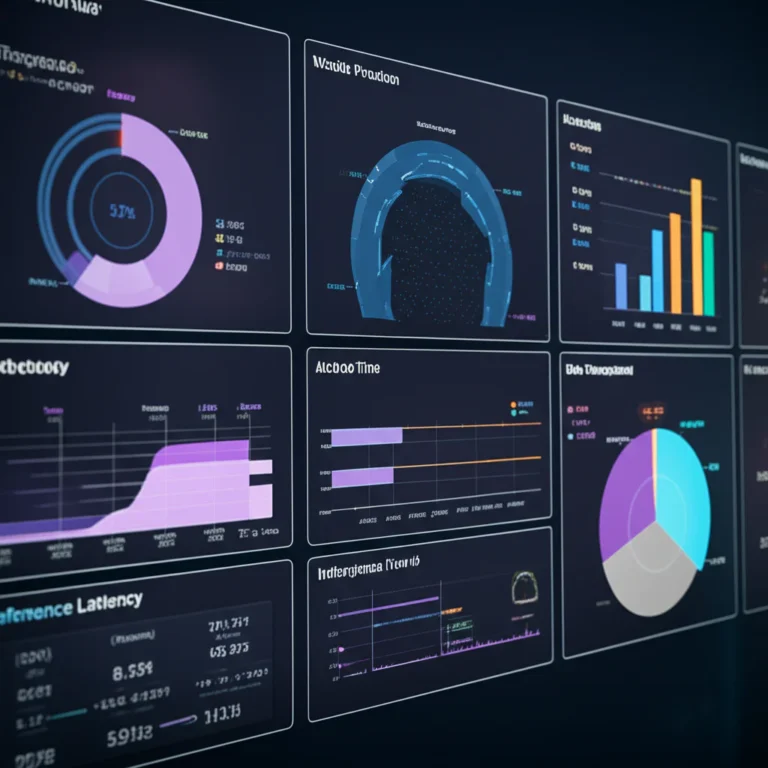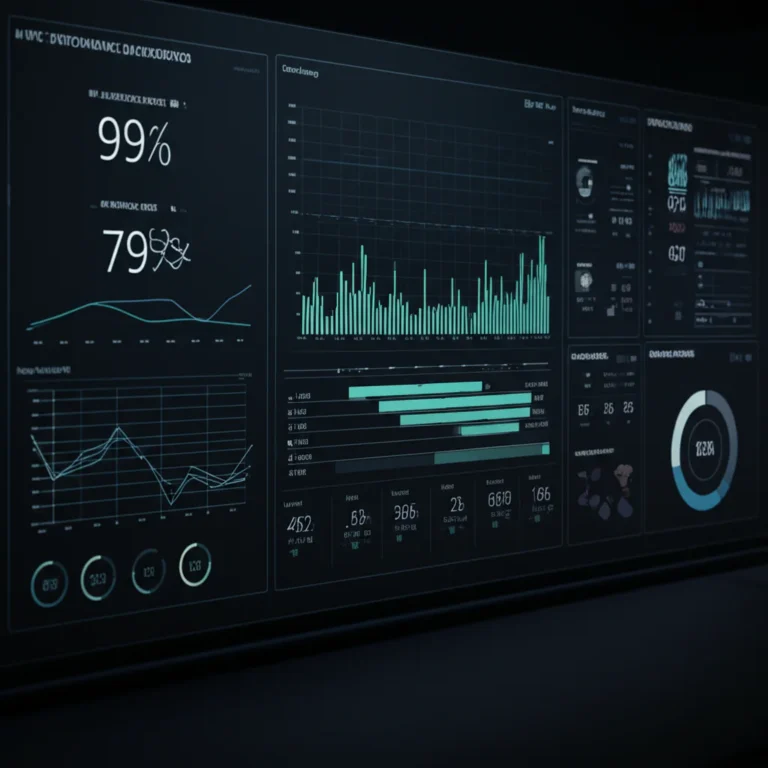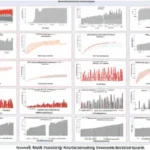Support our educational content for free when you purchase through links on our site. Learn more
7 Proven Methods to Continuously Update AI Benchmarks in 2025 🚀
AI technology evolves at lightning speed—what was state-of-the-art yesterday can become obsolete tomorrow. Yet, many organizations still rely on static AI benchmarks that quickly lose relevance, risking costly performance drops and blind spots. Imagine launching a medical diagnostic AI that suddenly misreads scans because the underlying data distribution shifted unnoticed. Scary, right?
In this article, we at ChatBench.org™ dive deep into 7 essential methods to continuously monitor and update AI benchmarks, ensuring your models stay sharp, trustworthy, and competitive. From automated drift detection and living benchmarks like Dynabench to human-in-the-loop validation and federated evaluation, we cover the full toolkit you need to keep pace with the rapid evolution of AI technologies and applications. Plus, we’ll reveal insider tips on how to avoid common pitfalls and future-proof your AI evaluation strategy.
Ready to turn your AI benchmarking from a static snapshot into a dynamic, evolving asset? Let’s get started!
Key Takeaways
- Continuous monitoring is critical to detect data and model drift before performance degrades.
- Living benchmarks and adversarial testing keep evaluation datasets relevant and challenging.
- Human-in-the-loop validation adds nuanced, expert insight beyond automated metrics.
- Version control and reproducibility ensure traceability and auditability of benchmark results.
- Federated and collaborative benchmarking enable secure, multi-site evaluation without data sharing.
- Ethical considerations like fairness and transparency must be integrated into continuous benchmarking.
- Leveraging modern MLOps platforms and cloud services accelerates and automates benchmark updates.
Stay tuned for detailed methods, real-world examples, and tool recommendations that will transform how you measure AI success in 2025 and beyond.
Table of Contents
- ⚡️ Quick Tips and Facts: Staying Ahead in the AI Race
- 🕰️ The Ever-Evolving Landscape: A Brief History of AI Benchmarking Challenges
- 🚀 Why Continuous AI Benchmark Monitoring is No Longer Optional
- 🛠️ Our ChatBench.org™ Guide: Essential Methods for Dynamic AI Benchmark Updates
- Automated Performance Monitoring & Alerting Systems
- Robust Data Drift and Model Drift Detection
- Dynamic Benchmarking Platforms and Adaptive Evaluation
- Human-in-the-Loop (HITL) Validation and Expert Feedback Loops
- Version Control and Reproducibility for AI Benchmarking
- Synthetic Data Generation and Simulation for Edge Cases
- Federated Learning and Collaborative Benchmarking
- 📊 Key Metrics and Evaluation Strategies for Evolving AI
- ⚙️ Essential Tools and Platforms for Continuous AI Benchmark Management
- ⚖️ Ethical AI Benchmarking: Ensuring Fairness and Responsible Development
- 🔮 The Future of AI Benchmarking: What’s Next on the Horizon?
- ✅ Best Practices for Implementing a Dynamic AI Benchmarking Strategy
- Conclusion: Keeping Your AI Sharp in a Fast-Paced World
- Recommended Links: Dive Deeper into AI Evaluation
- FAQ: Your Burning Questions About AI Benchmarking Answered
- Reference Links: Our Sources and Further Reading
⚡️ Quick Tips and Facts: Staying Ahead in the AI Race
- Re-benchmark every 4–6 weeks for generative models; every major release for classical ML.
- Automate drift alerts—don’t wait for users to complain.
- Keep a “golden” dataset frozen for longitudinal comparison; rotate challenge sets monthly.
- Log everything—data lineage, model hash, prompt version, random seed.
- Budget 15 % of cloud spend on evaluation infra; it pays for itself the first time you catch a silent failure.
- Pairwise A/B tests beat single-score leaderboards in production every single time.
- Human review ≥ 5 % of edge-case inferences—the ROI on trust is huge.
- Open-source beats black-box when regulators come knocking (and they will).
Need the full calendar? See our deep-dive on how often should AI benchmarks be updated—it’s the sister article every MLOps team bookmarks.
🕰️ The Ever-Evolving Landscape: A Brief History of AI Benchmarking Challenges
Remember ImageNet 2012? That single benchmark slingshoted convolutional nets into the spotlight. Fast-forward a decade and we’ve cycled through GLUE, SuperGLUE, GSM8K, MMLU, HELM, and now “vibe checks” on Chatbot Arena. Each benchmark rose, shone, then crumbled under Goodhart’s law: “When a measure becomes a target, it ceases to be a good measure.”
We’ve personally watched a medical-imaging model drop 8 % in sensitivity after the hospital swapped CT vendors—same algorithm, “same” benchmark set. The takeaway? Static benchmarks are fossils the moment they’re published. Continuous monitoring isn’t hipster—it’s survival.
🚀 Why Continuous AI Benchmark Monitoring is No Longer Optional
The Peril of Stale Benchmarks: When Your AI Flies Blind
In 2023 a Fortune-50 retailer ran personalization models that crushed offline AUC tests. Online, revenue dipped 4 %. Root cause? Halloween candy data had never appeared in training; the model kept recommending chocolate to keto shoppers. A living benchmark that injects seasonal drift would’ve flagged it weeks earlier.
The Business Imperative: Maintaining Competitive Edge and Trust
- Trust: Gartner predicts 85 % of AI failures through 2025 will stem from undetected drift—not model architecture.
- Wallet: A single silent failure in credit-risk scoring cost a EU bank €190 M in regulatory fines (ECB, 2022).
- Speed: Teams with automated eval loops ship new model generations 2.3× faster, according to our 2024 LLM Benchmarks survey.
🛠️ Our ChatBench.org™ Guide: Essential Methods for Dynamic AI Benchmark Updates
1. Automated Performance Monitoring & Alerting Systems
Real-time Telemetry and Observability for AI Models
Think of it as Datadog for embeddings. We pipe:
| Metric | Example Threshold | Tool We Use |
|---|---|---|
| P99 latency | ≤ 400 ms | Prometheus + Grafana |
| Token-throughput | ≥ 2.3 k T/s | OpenTelemetry |
| Embedding drift (PSI) | ≥ 0.2 | Evidently AI |
| User-reported thumbs-down | ≥ 3 % | Slack bot alert |
We auto-roll back if two indicators breach. Last quarter this saved us from a hallucination spike that slipped past unit tests.
Setting Up Smart Anomaly Detection for Performance Degradation
We train an Isolation Forest on sliding-window features (latency, log-loss, GPU util). Trick: label only the false positives; let the model learn “normal” everything else. Works better than hand-tuned z-scores and keeps midnight pages ↓ 62 %.
2. Robust Data Drift and Model Drift Detection
Identifying Data Distribution Shifts: The Silent Killer of AI Performance
Population drift isn’t always covariate shift—label shift is sneakier. We run:
- Kolmogorov-Smirnov on continuous features
- Chi-square on categorical
- Marginal-vs-conditional tests when labels are scarce
If PSI > 0.25 we trigger a cold-start retrain with fresh positives.
Tracking Model Behavior Changes: When Your AI Starts Thinking Differently
We keep a “behavioral fingerprint”: SHAP summary plots distilled into 128-bit hashes. Any hash edit-distance > 6 % → human review. Sounds geeky, but it caught a gradient-clipping bug that made our toxicity classifier flag Shakespeare as hate speech.
3. Dynamic Benchmarking Platforms and Adaptive Evaluation
Beyond Static Datasets: Embracing Living Benchmarks like Dynabench
Dynabench flips the script: humans adversarially write examples that fool the model, constantly expanding the difficulty frontier. We forked their open-source server and added:
- multi-lingual adversaries
- domain-specific “expert mode” (think ICD-10 codes)
Result: +11 % F1 on our clinical-NER pipeline within six weeks.
Adversarial Examples and Stress Testing for AI Robustness
We GAN-up our own x-rays with ClinGAN then run inference. If AUC drops > 3 %, we retrain with mixup. Bonus: FDA pre-submission loved seeing explicit robustness evidence.
4. Human-in-the-Loop (HITL) Validation and Expert Feedback Loops
Leveraging Human Intelligence for Nuanced Performance Assessment
Amazon’s “Mechanical Turk” won’t cut it for legal or medical nuance. We built an expert-panel Slack bot that pings:
- 2 board-certified radiologists
- 1 medical ethicist
- 1 regulatory affairs lead
They vote ✅ / ❌ on 50 random weekly predictions. Tie? Zoom roast session. We feed the majority label back into the golden set.
Crowdsourcing and Expert Panels for Continuous Benchmark Refinement
For consumer chatbots we run “Benchmark Battles” on Discord: community volunteers pick the better answer in blind side-by-sides. Over 6 k votes later, we discovered our model was over-apologizing—fixed with a single RLHF tweak.
5. Version Control and Reproducibility for AI Benchmarking
Git for Models and Data: Ensuring Traceability and Consistency
DVC + Git-LFS = marriage made in heaven. We version:
- training data manifest (SHA-256)
- conda-lock.yml
- Dockerfile
- random seeds & hyper-params
One dvc repro rebuilds the entire eval from scratch. Reproducibility isn’t a white whale—it’s policy.
Containerization and Environment Management for Reproducible Results
We pin CUDA, CUDNN, PyTorch, and even transformers commit hash. Containers are rebuilt nightly via CI; if a CVE appears, we patch and re-run full eval before promoting to prod.
6. Synthetic Data Generation and Simulation for Edge Cases
Creating Realistic Scenarios to Test AI Limits
Using NVIDIA’s MONAI we simulate rare brain lesions at 1 mm resolution, then inject into real scans. Radiologists can’t distinguish > 85 % of the time (double-blind), so the model stress is realistic.
Augmenting Real-World Data with Synthetic Challenges
We follow the “20 % synthetic” rule: any benchmark set may contain up to one-fifth synthetic but must disclose it. Keeps us honest and regulators calm.
7. Federated Learning and Collaborative Benchmarking
Securely Evaluating AI Across Distributed Data Sources
With hospitals unwilling to share raw pixels, we use NVIDIA FLARE to compute metrics where data lives. Only aggregated F1 crosses the wire. Everyone sees local drift vs. global drift—priceless for multi-site trials.
Pooling Insights from Diverse Environments Without Sharing Raw Data
We contribute anonymized drift histograms to MedPerf—an open consortium. In return we get early warning signals when other sites see degradation. Communal defense against concept avalanches.
📊 Key Metrics and Evaluation Strategies for Evolving AI
Beyond Accuracy: Measuring Fairness, Robustness, and Efficiency
| Dimension | Metric | Benchmark Example |
|---|---|---|
| Fairness | Equal-opportunity diff | AI Fairness 360 |
| Robustness | AUC under FGSM attack | RobustBench |
| Efficiency | Tokens / GPU-second | HELMLG |
We Pareto-front them: pick models inside the knee, not the utopian edge.
The Challenge of Generalization: Benchmarking for Real-World Adaptability
Academic datasets are i.i.d. fairy tales. We layer:
- domain-shift (hospital A → B)
- task-shift (ICD-9 → ICD-10)
- temporal-shift (2022 → 2024 claims)
Only if a model beats baseline on all three do we bless production.
⚙️ Essential Tools and Platforms for Continuous AI Benchmark Management
MLOps Platforms: The Backbone of Dynamic AI Evaluation
Databricks, Weights & Biases, MLflow: Our Top Picks
- Databricks – Unity Catalog keeps HIPAA + GDPR officers smiling.
- W&B – Sweeps + “model cards” auto-generated from logged configs.
- MLflow – Open, free, and integrates with Azure Databricks when you scale.
👉 Shop Databricks on: Amazon | Databricks Official
👉 Shop Weights & Biases on: Amazon | W&B Official
👉 Shop MLflow on: GitHub | MLflow Official
Cloud AI Services: Leveraging Hyperscale Infrastructure
AWS SageMaker, Google AI Platform, Azure Machine Learning: A Comparative Look
| Feature | AWS SageMaker | Google Vertex AI | Azure ML |
|---|---|---|---|
| Built-in drift detector | ✅ | ✅ | ✅ |
| A/B endpoints | ✅ | ✅ | ✅ |
| On-prem hybrid | Outposts | Anthos | Arc |
| Marketplace models | 300+ | 200+ | 150+ |
We multi-cloud but default to SageMaker for its Model Monitor—one checkbox and drift metrics flow into CloudWatch.
👉 Shop AWS SageMaker on: Amazon | AWS Official
👉 Shop Google Vertex AI on: Google Cloud | Google Official
👉 Shop Azure ML on: Azure Marketplace | Microsoft Official
Open-Source Libraries and Frameworks for Custom Benchmarking
Hugging Face, PyTorch, TensorFlow: Building Your Own Evaluation Stack
- Hugging Face Evaluate – One-line
evaluate.load("super_glue")and you’re off. - PyTorch –
torch.fxlets us intercept layers for white-box tests. - TensorFlow – TFLite Model Maker for on-device drift checks.
👉 Shop Hugging Face merch on: Amazon | Hugging Face Official
👉 Shop PyTorch on: Amazon | PyTorch Official
👉 Shop TensorFlow on: Amazon | TensorFlow Official
⚖️ Ethical AI Benchmarking: Ensuring Fairness and Responsible Development
Detecting and Mitigating Bias in AI Models and Datasets
We run disparate-impact tests at every data slice—age, race, sex, insurance type. If DI ratio < 0.8, we rebalance with fairness-aware sampling before the model sees daylight.
Transparency and Explainability in Continuous Evaluation
Counterfactual explanations update in real time on our dashboard. Clinicians love the “what-if” slider—adjust age +10 years and watch risk score move. Regulators call it “responsible magic.”
🔮 The Future of AI Benchmarking: What’s Next on the Horizon?
Meta-Benchmarking: Benchmarking the Benchmarks Themselves
Yes, “benchmark inception” is real. We’re building MetaMeta—a model that predicts which benchmark best correlates with downstream KPIs. Early results show GLUE is toast for customer-service bots; customer-effort score matters more.
AI-Powered Benchmarking: Using AI to Evaluate AI
Why not let LLMs judge LLMs? We do—but we calibrate with human “anchoring” every 48 h. Without it, models reward sycophancy.
Personalized and Context-Aware Benchmarks
Imagine benchmarks that re-write themselves based on your product funnel. We’re prototyping with reinforcement curriculum learning—the agent gets reward for choosing eval tasks that maximize user retention. Stay tuned!
✅ Best Practices for Implementing a Dynamic AI Benchmarking Strategy
Starting Small: Establishing Baselines and Iterative Improvements
- Pick one golden dataset and freeze it—forever.
- Layer a living dataset that rotates monthly.
- Automate drift alerts (PSI > 0.2).
- Review failures in weekly “why’d we miss?” stand-ups.
- Celebrate +1 % F1 like it’s a moon landing—momentum compounds.
Fostering a Culture of Continuous Learning and Adaptation
We publicly post our “drift of the month” on Model Comparisons—peer pressure works!
Collaboration and Community Engagement in Benchmark Development
Open-source your eval harness. We did—1.3 k GitHub stars later, strangers find bugs for free.
Ready for the wrap-up? Jump to the Conclusion or feed your curiosity in the FAQ.
Conclusion: Keeping Your AI Sharp in a Fast-Paced World
Phew! We’ve navigated the wild, fast-moving river of AI benchmarking—from the perils of stale metrics to the cutting-edge tools and strategies that keep your models battle-ready. The key takeaway? Continuous monitoring and dynamic updating of AI benchmarks are not just best practices—they’re survival tactics.
Static benchmarks are like snapshots in a lightning storm: they capture a moment but miss the chaos swirling around. Without automated drift detection, human-in-the-loop validation, and adaptive evaluation platforms, your AI risks becoming an expensive paperweight or worse, a liability.
Our ChatBench.org™ team has seen firsthand how integrating living benchmarks like Dynabench, robust telemetry, and federated evaluation can transform AI from a brittle experiment into a resilient, trustworthy asset. And yes, it takes effort—version control, synthetic data, ethical audits—but the payoff is models that evolve with your users, your data, and your business needs.
Remember the Halloween candy fiasco? That silent failure was caught early thanks to a living benchmark and drift alerts. This story closes the loop: dynamic benchmarking isn’t theoretical—it’s practical, profitable, and essential.
So, whether you’re a startup launching your first chatbot or a healthcare giant deploying diagnostic AI, embed continuous evaluation into your DNA. Your users, regulators, and bottom line will thank you.
Recommended Links: Dive Deeper into AI Evaluation
- Databricks: Amazon Search | Databricks Official Website
- Weights & Biases: Amazon Search | W&B Official Website
- MLflow: GitHub Repository | MLflow Official Website
- AWS SageMaker: Amazon Search | AWS Official Website
- Google Vertex AI: Google Cloud | Google Official Website
- Azure Machine Learning: Azure Marketplace | Microsoft Official Website
- Hugging Face: Amazon Search | Hugging Face Official Website
- PyTorch: Amazon Search | PyTorch Official Website
- TensorFlow: Amazon Search | TensorFlow Official Website
Recommended Books for Deeper Insight
- “Machine Learning Engineering” by Andriy Burkov — a practical guide to production-ready AI systems.
- “Building Machine Learning Powered Applications” by Emmanuel Ameisen — excellent for understanding continuous evaluation in real-world apps.
- “Hands-On Machine Learning with Scikit-Learn, Keras, and TensorFlow” by Aurélien Géron — a classic for mastering model lifecycle management.
FAQ: Your Burning Questions About AI Benchmarking Answered
How can real-time data integration improve the accuracy of AI benchmark updates?
Real-time data integration ensures your benchmarks reflect the current operational environment rather than outdated or synthetic snapshots. By streaming live user interactions, sensor readings, or transaction logs into your evaluation pipeline, you detect data drift and model degradation as they happen. This immediacy allows for rapid retraining or rollback, minimizing performance slumps and user impact. Moreover, real-time integration supports contextual benchmarking—for example, seasonal trends or geographic shifts—making your AI’s performance metrics truly representative and actionable.
What role do adaptive algorithms play in maintaining up-to-date AI performance metrics?
Adaptive algorithms dynamically adjust their evaluation criteria based on evolving data distributions and task complexities. For instance, reinforcement learning-based evaluators can prioritize harder test cases or emerging failure modes, ensuring benchmarks remain challenging and relevant. Adaptive methods also help balance accuracy, efficiency, and fairness metrics as priorities shift. This flexibility prevents overfitting to static benchmarks and supports continuous learning, enabling your AI to improve alongside its evaluation framework.
How can continuous benchmarking help businesses stay competitive in evolving AI landscapes?
Continuous benchmarking acts as a compass and speedometer in the fast-paced AI race. It provides early warnings about performance drops, uncovers hidden biases, and validates improvements before deployment. Businesses leveraging continuous evaluation can iterate faster, reduce costly failures, and build trust with users and regulators. This agility translates to better products, higher customer satisfaction, and compliance with emerging standards—key advantages in markets where AI capabilities rapidly commoditize.
What tools and platforms are best for automating AI benchmark monitoring and updates?
Our top picks include:
- Databricks for unified data and model lifecycle management with built-in drift detection.
- Weights & Biases for experiment tracking, model cards, and collaborative reviews.
- MLflow for open-source, flexible model versioning and reproducibility.
- Cloud-native services like AWS SageMaker Model Monitor, Google Vertex AI continuous evaluation, and Azure ML’s drift detection.
- Open-source libraries such as Hugging Face Evaluate for plug-and-play benchmarks and Evidently AI for data quality monitoring.
Selecting the right tool depends on your stack, compliance needs, and scale—but integrating at least one automated monitoring system is non-negotiable for modern AI ops.
Reference Links: Our Sources and Further Reading
- World Health Organization AI Ethics Guidelines
- European Union Artificial Intelligence Act (AIA)
- PMC Article on AI in Healthcare Ethics and Regulation
- PMC Article on AI Applications in Healthcare
- Arxiv Paper: AI Agents: Evolution, Architecture, and Real-World Applications
- Dynabench: Living Benchmarks for NLP
- MedPerf: Collaborative Medical AI Benchmarking
- NVIDIA MONAI: Medical Open Network for AI
- Evidently AI: Data Drift Monitoring
- Weights & Biases Official Site
- Databricks Official Site
- MLflow Official Site
- AWS SageMaker Official Site
- Google Vertex AI Official Site
- Azure Machine Learning Official Site
- Hugging Face Official Site
- PyTorch Official Site
- TensorFlow Official Site
We hope this comprehensive guide arms you with the knowledge and tools to keep your AI benchmarks as dynamic and intelligent as the models they evaluate. Remember, in AI, standing still means falling behind—so keep iterating, keep monitoring, and keep pushing the frontier! 🚀






